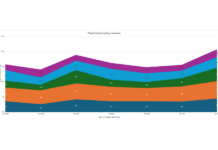
Interdealer broker and trading services provider TP ICAP outlined its future plans at its Capital Markets Day on Tuesday 1 December, to develop low touch trading across asset classes, and to facilitate dealer-to-client trading through the acquisition of block-trading platform Liquidnet.
Joanna Nader, group head of strategy at TP ICAP, ran though several opportunities the business had ahead of it. The cyclical nature of broking revenues means much of current revenue is closely correlated with broader secondary market activity, and the cyclicality reflects structural issues in the market, she observed, which supported the firm’s two pronged strategy. The first element of this is developing electronic trading ‘hubs’ based on asset class.

“We know [clients] need more efficient ways to transact and to manage their orders,” observed CEO Nicolas Breteau. “They are increasingly interacting with their own clients electronically and therefore traders are more comfortable with using platforms to transact. What we want to do now is introduce low-touch solutions to our customers systematically and programmatically.”
The acquisition of Liquidnet, the second prong, works in several asset classes. It gives the firm a strong dealer-to-client trading venue in equities and solid growth potential in both credit and rates – notably in the swaps space.
While dealer margin pressure and trading desk rationalisation supports the economic rationale for building the Rates Hub, because voice is expensive for both dealers and TP ICAP, Liquidnet’s barrier in the D2C rates market and the credit markets was seen to be connectivity, while TP ICAP has a significant number of sell-side firms already connected to its platforms.
Credit markets were characterised by Nader as inefficient and dysfunctional. US interdealer trading volumes had fallen from about 24% of total volume in 2010 to around 19% in 2020 year to date, with both investment grade and high yield trading effectively in the same range since 2016. In that last ten years, secondary market average daily volume (ADV) has more than doubled and the size of primary market issuance has increased by over 50%.
That creates opportunities for TP ICAP to expand through a combination of low-touch interdealer fixed income trading and an expansion of Liquidnet’s role as a dealer-to-client trading hub which currently makes less than 2% of its revenue from the fixed income market, yet has buy-side daily liquidity of US$13 billion.

TP ICAP outlined three focused opportunities it could target. The first two are dealer-to-client trading of credit and dealer-to-client trading of rates; the third is enhancing its data and analytics offering. Currently buy-side clients account for just 15% of TP ICAP’s data sales; if it can expand this to the 500 fixed income buy-side clients that have already been onboarded by Liquidnet, it can move that buy-side customer base to 45% of sales by 2025.
“Looking ahead we will continue to expand channel partnerships including with order and execution management systems,” said Eric Sinclair, CEO for Data and Analytics at TP ICAP.
©Markets Media Europe 2025

























